This article was adapted from the book The Art of Settlement, written by Jason Lazarus.
Heidi Ahlborn was injured in a very serious car accident in January of 1996. At the time, she was a nineteen-year-old college student pursuing a degree in teaching. She suffered a catastrophic brain injury that left her incapable of finishing college and unable to care for or support herself in the future.
Due to her injuries and lack of assets, Ahlborn qualified for Medicaid coverage in Arkansas. Medicaid paid Arkansas healthcare providers $215,645.30 for injury-related care on her behalf.
When the Arkansas Department of Health tried to assert a lien against Ahlborn’s settlement, she sued, and the case went all the way to the Supreme Court, who found in her favor. When the Ahlborn decision was published, it was hailed by the Center for Constitutional Litigation as a “significant victory” for injury victims. Here’s why Ahlborn’s case was so revolutionary.
The Background
After the accident, a personal injury action was filed on behalf of Heidi in April of 1997. The damages sought included not only past medical costs but also for her “permanent physical injury; future medical expenses, past and future pain, suffering and mental anguish; past loss of earnings and working time; and permanent impairment of the ability to earn in the future.”
During the pendency of the litigation, the Arkansas Department of Health Services (hereinafter “ADHS”) sent Ahlborn’s personal injury attorneys periodic notices regarding the outlays by Medicaid on behalf of Ms. Ahlborn. The letters indicated that Arkansas law provided ADHS with a claim for reimbursement from “any settlement, judgment or award” that was obtained from “a third party who may be liable” for Heidi Ahlborn’s injuries and no settlement “shall be satisfied without first giving [ADHS] notice and a reasonable opportunity to establish its interest.”
When the suit was filed, ADHS wasn’t notified of the suit, as requested. Plaintiff’s counsel did inform ADHS of the available insurance coverage in the suit. ADHS intervened in the personal injury action in February of 1998 to assert a lien against any proceeds from a settlement or judgment. The case was ultimately settled in 2002 without, per customary practice, any allocation of the settlement proceeds between categories of damages. ADHS asserted a lien against the settlement for the total amount of the payments made by ADHS for Ahlborn’s care, which totaled $215,645.30.
The Case and Decision
In September of 2002, Ahlborn filed suit in the United States District Court for the Eastern District of Arkansas seeking a declaratory judgment that “the lien violated the federal Medicaid laws insofar as its satisfaction would require depletion of compensation for injuries other than past medical expenses.”
Certain stipulations were entered into by the parties in the litigation in the US District Court. Firstly, ADHS and Ahlborn stipulated that Heidi Ahlborn’s total claim “was reasonably valued at $3,040,708.18.” Secondly, the parties agreed that the out-of-court settlement reached represented “one-sixth of that sum.” Thirdly, the parties stipulated that if the plaintiff’s “construction of federal law was correct, ADHS would be entitled to only the portion of the settlement ($35,581.47) that constituted reimbursement for medical payments made.”
On cross motions for summary judgment, the federal district court found that Ahlborn, under Arkansas law, assigned to ADHS her right to any tort recovery from third parties to the “full extent of Medicaid’s payments for her benefit.” The court held accordingly that ADHS was entitled to its full lien amount of $215,645.30.
The ruling was appealed to the Eighth Circuit and the judgment of the District Court was reversed. The Eighth Circuit held that ADHS was only entitled to the portion of the settlement attributable to payments for medical care. ADHS appealed to the United States Supreme Court which affirmed the Eighth Circuit’s decision.
The Supreme Court’s Affirmation
The heart of the controversy before the Supreme Court was the interpretation of federal law requiring state Medicaid programs to recover from third-party tortfeasors amounts paid on behalf of an injury victim. Arkansas had complied with federal law and enacted statutes providing ADHS with the right to recover “the cost of benefits” from third parties.
Further, the Arkansas statute provided that ADHS “shall have a right to recover” when medical assistance is provided to the Medicaid recipient due to “injury, disease, or disability for which another person is liable.” It was pursuant to this statute that the ADHS claimed an entitlement to recover all of the costs expended on Ahlborn’s behalf even though it would be recovered from portions of a settlement that didn’t represent medical expenses.
The court’s decision in favor of Ahlborn rested on its interpretation of the “anti-lien” statute in the United States Code. The anti-lien statute prohibits states from exerting liens against a Medicaid recipient’s property prior to death for medical assistance paid on their behalf except in specifically enumerated situations.
While the court found one of the anti-lien statute’s enumerated exceptions was relevant to Ahlborn’s situation, it was the assignment of a Medicaid beneficiary’s rights to the state and assertion of liens to collect from a third-party recovery which it found was limited only to medical care. Accordingly, because the exception that was carved out was limited to payments for medical care, the anti-lien provision bars recovery by ADHS against the portion of Ahlborn’s settlement that was nonmedical.
The Implications
The holding of Ahlborn was a surprising result and has had a significant impact on personal injury litigation. In some instances, it has resulted in a much larger net amount being available to the injury victim at the expense of the States’ ability to recover Medicaid expenditures.
Since the primary holding in Ahlborn is that federal laws that authorize states to assert recoveries against third parties who have provided payments for medical care for Medicaid beneficiaries only applies to the portions of a settlement that represent compensation for past medical expenses, it appeared to invalidate state statutes that require full reimbursement of Medicaid expenditures from a third-party recovery.
After the Ahlborn decision, states began to revise their third-party liability statutes with inconsistent results in the courts. In 2012, a challenge of the North Carolina Medicaid’s third-party liability recovery statute would lead the United States Supreme Court to again weigh in on state Medicaid agencies’ rights to recover.
The Limits on a State’s Recovery Rights
As a trial lawyer, it is important to understand the underpinnings of the Ahlborn decision so you can apply them to your state’s third-party liability recovery provisions. The important thing to remember is that this case limits a state Medicaid agency’s recovery rights related to a third-party liability settlement. In order to reduce a Medicaid lien, state-specific statutes must be followed, but arguments to reduce should be based on the principles espoused in Ahlborn so that the lien is reduced in proportion to the full value of damages versus what was received.
For more advice on Medicaid liens, you can find The Art of Settlement on Amazon.




